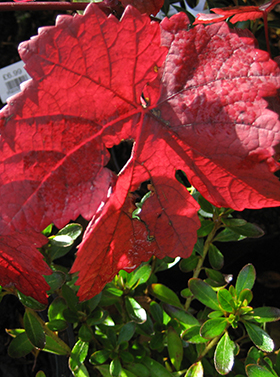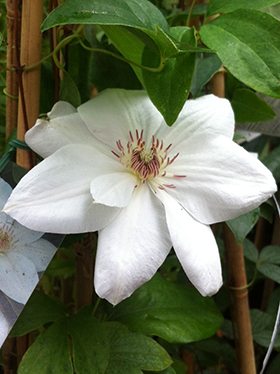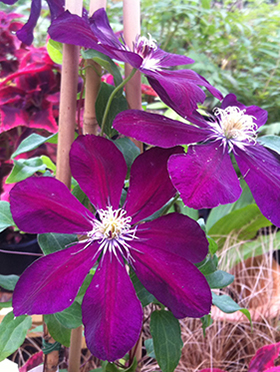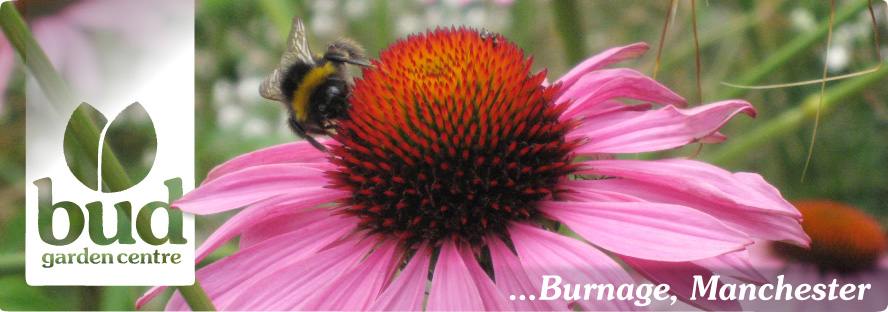
Climbers
Climbing plants are an important part of any well-designed garden: they can cloak unsightly garden boundaries and cover arbours to divide your space; they add height by covering tripods and obelisks; many will grow through trees, shrubs and hedges. If your garden is small, climbers enable you to add interest and colour on a vertical axis. Although many like a sunny aspect, there are climbers available which will positively thrive in more shady situations.
The majority of our climbers are raised at a specialist nursery in Worcestershire. The nursery uses biological controls to manage pests, and is currently trialling peat free compost. Buying from specialists means we are able to choose from, and offer, a broad range of plants, whilst you can be assured of consistently good quality.
Climber list
Akebia (Chocolate Vine) - Ampelopsis - Clematis, many varieties - Hedera (Ivy) - Hydrangea petiolaris (Climbing Hydrangea) - Lonicera - (Honeysuckle) - several varieties - Parthenocissus (Virginia Creeper) - several varieties - Passiflora (Passion Flower) - Solanum (potato vine) - Wisteria - Ornamental grapevine

More about clematis
Without doubt the most popular climbing plant in the UK: with hundreds of varieties to choose from, there is a clematis for every garden! There are 3 broad clematis groups, based on their pruning requirements. We sell a selection from the following groups, listed in order of flowering time.
Pruning Group 1: No/light pruning.
Prune, if at all, in mid-to late spring, after flowering and once the risk of frost has passed. This group comprises the early-blooming clematis that flower on shoots produced the previous season.
Evergreen e.g. C. armandii. C. cirrhosa Flowers March
Alpina e.g. C. alpina 'Francis Rivis'. Flowers March-Mid May
Macropetala e.g. C. macropetala 'Purple Spider'. Flowers March-Mid May
Montana e.g. C. montana 'Wilsonii'. Flowers May and June
Pruning Group 2: Early large flowered group Light pruning.
Prune in February and after the first flush of flowers in early summer. This group comprises the large-flowered cultivars that flower in May to June on short shoots developing from the previous year's growth. Some flower again in late Summer on new growth. They require only to have the flowers cut off, back to a large growth bud immediately below the flower, as soon as flowering is over. They can, if preferred, be left unpruned other than for the removal of dead shoot ends in spring.
e.g. C. Niobe. Flowers May and June

Pruning Group 3: Hard pruning.
This group comprises clematis that flower from mid-to late Summer on the terminal 60cm (2ft) or so of the current year’s growth. If this type is left unpruned, growth will continue from where it ended the previous season, resulting in a tangled mass of growth, flowering often well above eye level and stems bare at the base. These late-flowering clematis are best pruned back hard in February each year to the lowest pair of buds.
Late large-flowered Hybrids e.g. C. jackmanii. Flowers June-September
Viticella e.g. C. viticella 'Polish Spirit'. Flowers July-November
Texensis e.g. C. texensis 'Gravetye Beauty'. Flowers July-October
Orientalis e.g. C. orientalis 'Bill Mackenzie'. Flowers July-October
Late mixed group e.g. C. flammula. Flowers August-October
